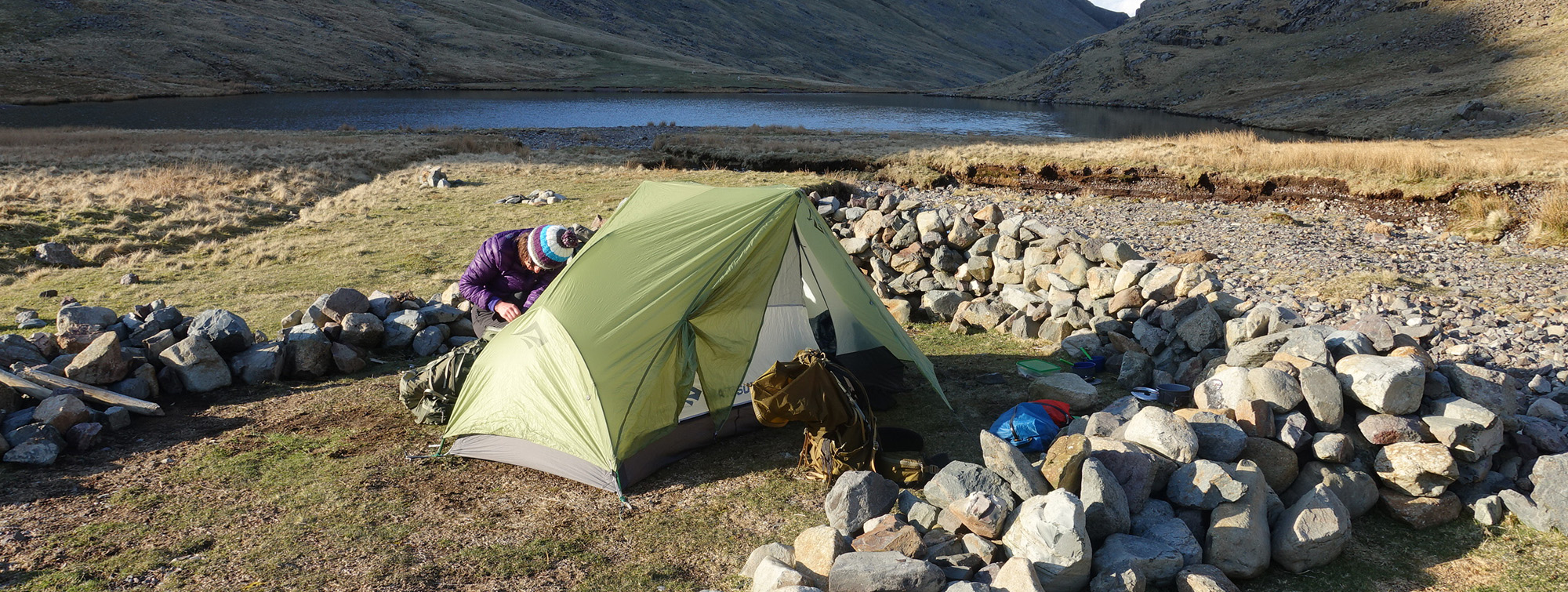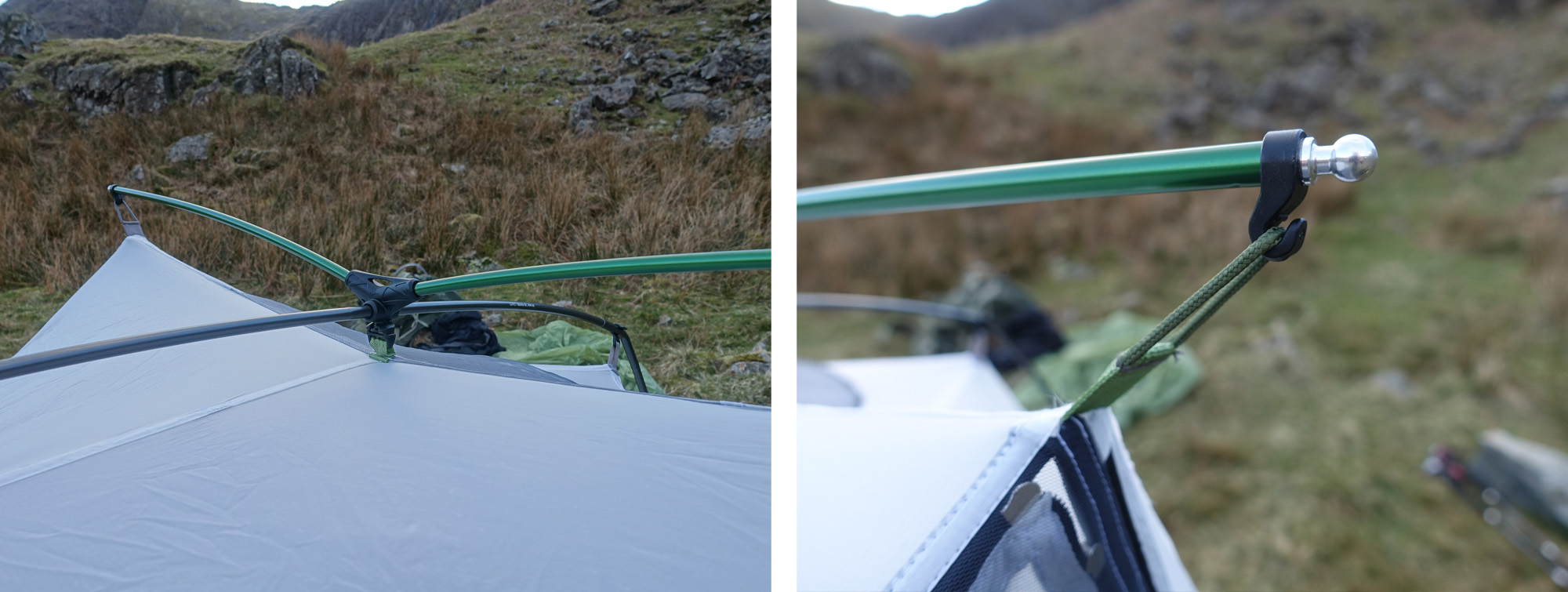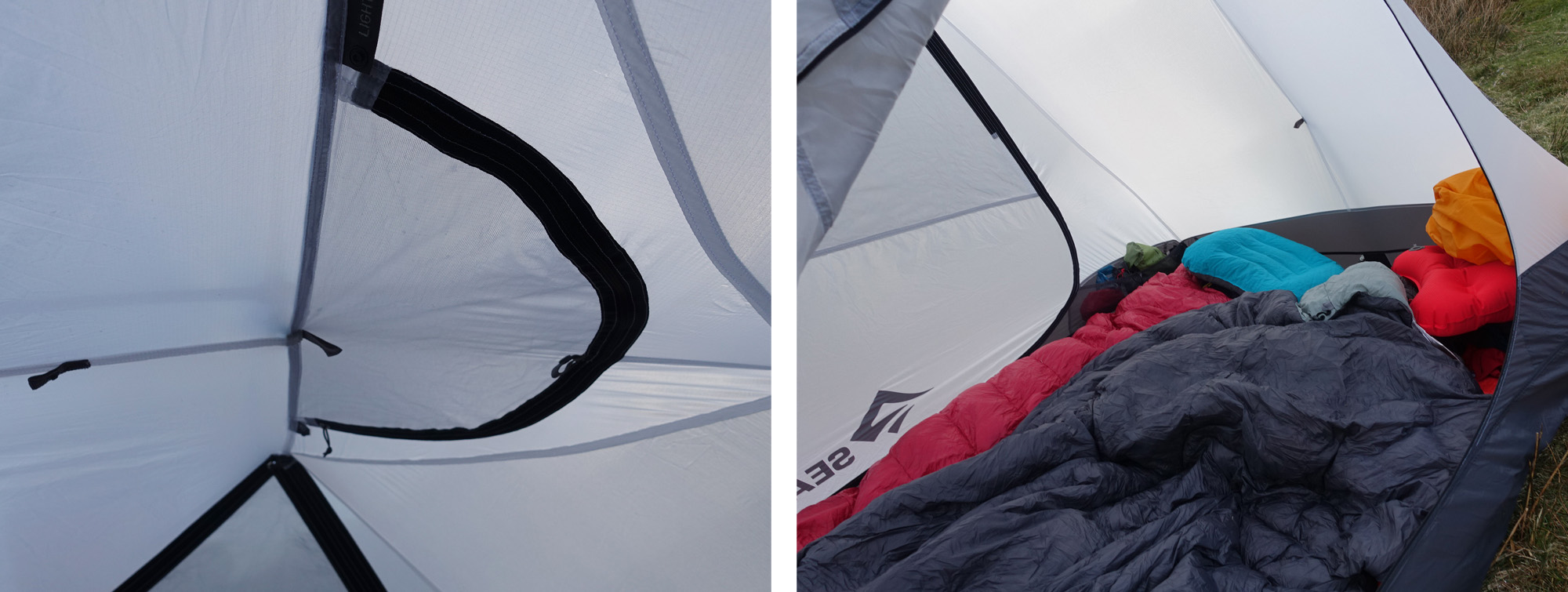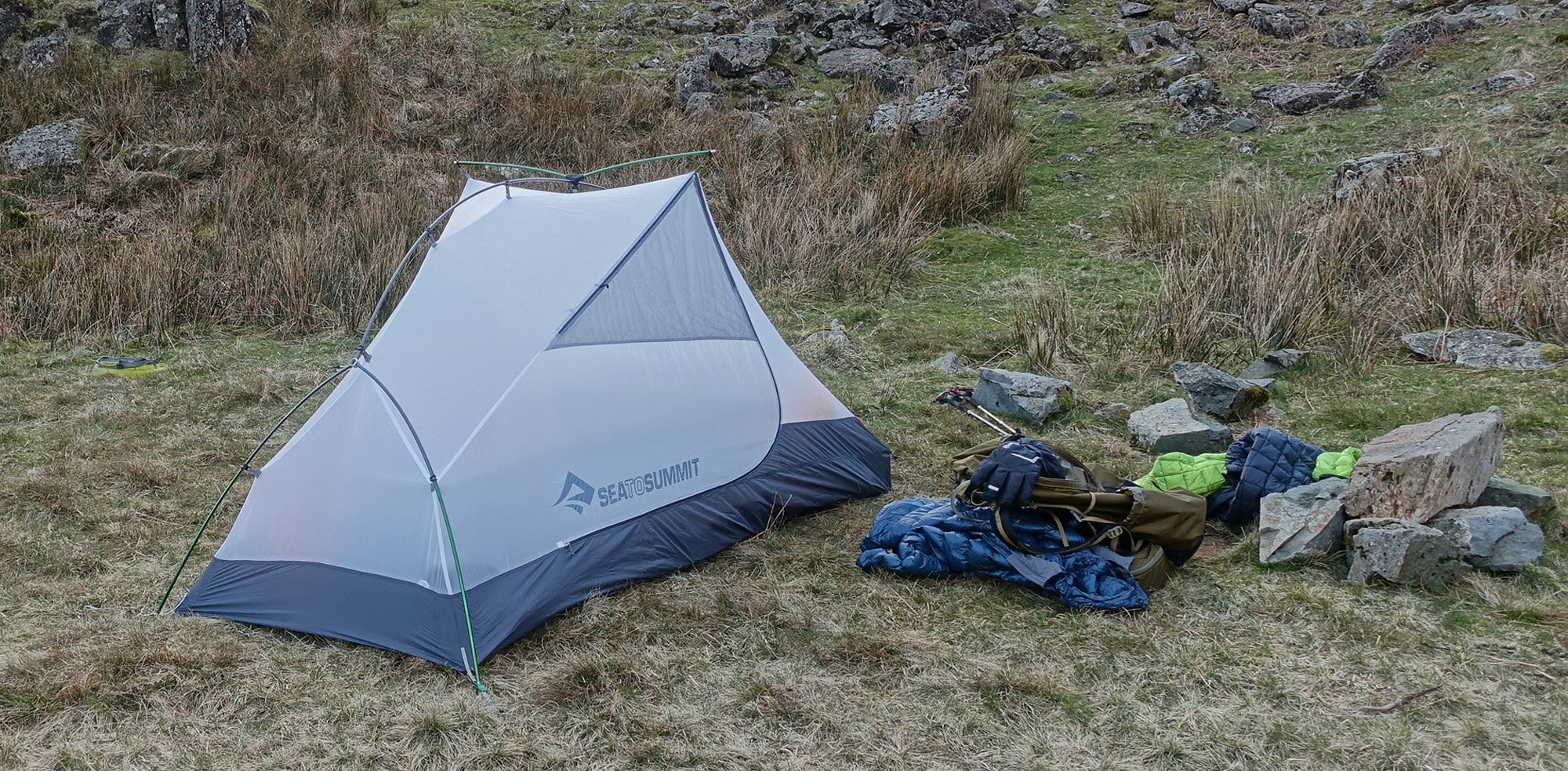Sea to Summit Alto TR2 Plus Tent Review - Ultralight Outdoor Gear
Posted by Mark Richardson on May 04, 2022

Sea to Summit have thought about the design of the Alto tents very carefully trying not to recreate what’s already available and fans of the brand will not be disappointed with this tent.
We took the Plus version out for a three-day backpacking trip at the beginning of April when the weather was very cold but quite clear. The cold conditions (sub zeroC) required largish sleeping bags and plenty of insulated clothing which filled the tent somewhat.
Like all their products STS have incorporated some neat features, the first is a dual stuff sack which clips into one but is easily dividable so that each person can carry about half the tent. The stuffsacks also clip into the inner tent to provide extra pockets – but since most of our gear was in stuffsacks and pouches anyway we didn’t bother. There are also two mesh pockets which are handy for the stuff you want to hand during the night.
There’s also the lighting tube which is made from the pole stuffsack, I guess the plastic foam is intended to diffuse the light from two head torches. Unfortunately, being ultralight ours didn’t make an impression on it, there was hardly a glow from the plastic insert. Our conclusion was that you need quite a powerful headtorch to get the best from this feature.
It comes with STS’ Ground Control Light tent pegs which are excellent – very lightweight and a good holding strength. We took a few extra pegs which came in handy for pegging out the flysheet a bit further – see below.
Pitching
Pitching is straightforward with colour coded poles that clip into the corners, there is also a Velcro loops that fastens round the single pole which will add to its stability in wind. This is also easily accessible – on some tents I’ve used it’s difficult to get to. Its customary with this type of tent to use the same pegs for the fly and inner tent but we found the flay achieved a much better pitch if we used extra peags to pull it farther out from the inner tent, especially at the head end.
Curiously we found the most vertical end of the tent is at the foot end, rather than at the head where you need it the most, I found I inadvertently touched the inner tent quite easily when I raised my head.
Architecture
STS makes a big noise about the inverted V in the centre of the tent and when pitched it does lift the extremities of the inner tent sides making it easier to get in and out. We pitched the tent at home before leaving and then twice on the trip, three times in total. We had a problem one night where the top section of pole (which holds the boss for the inverted V) had inverted itself meaning the inner tent was lower rather than higher. We couldn’t figure out why but have concluded it must have been the pitch.
We didn’t get the chance to test it in windy conditions but it has a single pole through one end of the tent and the ‘wishbone’ pole architecture at the foot end. This is not as strong as a double wishbone on some other tents.

Ventilation
The fabric inner tent of the PLUS version is meant to provide the warmth and wind protection required for colder conditions – ideal for our trip, however our nights were very still and we found condensation to be really heavy inside the inner tent.
Sure, we didn’t have the vents open because of the cold, but the fabric was not transferring the condensation through to the flysheet causing everything to be damp in the morning, and having to avoid touching the tent sides for fear of getting wet.
The vents are substantial, a bit less than half the door panels have zippable mesh vents and there is a further one in the ceiling of the tent corresponding to large vents on the flysheet. My experience with tent venting is not very good, for a start any vent depends on air flow – if there is no breeze then any vent will be ineffective, however the Alto tent is probably the best attempt at tackling it that I’ve seen.
With a good breeze and open vents, the condensation would not have been so prevalent.
Comparison with a Copper Spur UL2
If you are considering this tent, you will no doubt compare it with the likes of the
Copper Spur UL2 so I thought it was useful to help with this process, they are about the same size, the same weight and about the same price.
Focussing on the differences:
With the
STS Alto TR2 Plus tent you are getting a tent with a fabric inner, a higher spec’d groundsheet and an arguably easier entry and exit out of the sides of the tent. Compare that to the Copper Spur which has a total mesh inner and a double wishbone architecture which will perform better in the wind.
In Summary
If you are looking for a very lightweight two-person tent with a fabric inner that will stretch its use a little beyond the three seasons then this could be the tent for you. It’s as spacious as any tent in this category with the convenience of two doors and vestibules and the flexibility of very good venting options.



|
||
 |
||
|
Mark Richardson |
||
|
Mark was the founder of Ultralight Outdoor Gear back in 2006 and has completed long distance backpacking routes in some of the remotest parts of the world. His favourite hikes have been Torres del Paine (full circuit), the John Muir trail and the Markha Valley trail (Ladakh, India). Although semi-retired Mark has not lost any enthusiasm for minimalist backpacking and is tackling Scotland’s Munros choosing multi-day backpacking routes over the more usual guide book excursions. |
||
